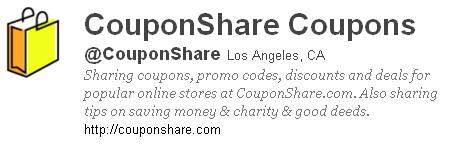(cross posted on the Ogilvy Fresh Influence blog)
 The folks at Whale Shark Media were kind enough to invite me to join the esteemed Dr. Kate Niederhoffer in engaging some of their partners around how to get the most out of social media. This sounds like an average assignment right up until the moment that I tell you Whale Shark Media is “rollup” of affiliate sites like CheapStingyBargains, Deals.com and CouponShare and that everyone in the room was an affiliate channel manager in many cases not on their brand’s “social team”. Not your typical day at the office, but who doesn’t love a challenge?
The folks at Whale Shark Media were kind enough to invite me to join the esteemed Dr. Kate Niederhoffer in engaging some of their partners around how to get the most out of social media. This sounds like an average assignment right up until the moment that I tell you Whale Shark Media is “rollup” of affiliate sites like CheapStingyBargains, Deals.com and CouponShare and that everyone in the room was an affiliate channel manager in many cases not on their brand’s “social team”. Not your typical day at the office, but who doesn’t love a challenge?
When I last touched affiliate marketing (providing special, limited time deals to coupon aggregators), it was a 100% siloed channel that the brand never pointed to for fear of cannibalizing their own channels. This is actually very similar brick & mortar strategies of forcing outlet malls 20+ miles out of cities to not hurt the sales of their full-priced stalwarts. Additionally, it was 100% transactional – no conversation or insights beyond what triggered transactions.
In preparation for today, I learned that social media has forever changed what it means to build a relationships with a brands deal seekers (who are not necessarily the same as your brand fans). While there is a whole spectrum of approaches, Kate & I summed them up as follows:
Branded, but Separate: Some brands choose to host separate, branded presences laser-focused on deals. Dell hosts both a separate “Dell Deals” Facebook fan page for limited-time deals on new systems and @delloutlet for deals on refurbished equipment that rarely interact with the rest of their social footprint. Similarly Gap has set up a separate @gapoutlet handle and Facebook fan page for the Gap Outlet brand. These have the opportunity to not just spew deals, but create content about what their brands deal-seekers potentially care about – “promotions, ideas from our stylists and budget-wise tips” – even if that differs from the motivations of the rest of their buying audience.
Integrated with Primary Brand Presence: Retailer Best Buy has both @BestBuy and @BestBuy_Deals. The Deals flavor hosts straight deals and no engagement (correctly stated in bio), but the difference here is that @BestBuy will intermittently point to and promote what is happening in the Deals handle. This only works if you are comfortable shining a light on your sweetest deals and nodding to the fact that we are all “deal-seekers” in the right context.
Deals Shared by Third Party Voices: The deal sites themselves also have a personality and a knowledge of their users to bring to the table. Brands who create offers for deal sites and trust in the site’s ability to cultivate their community have much to gain in uptake on their deals. Who wouldn’t want to chow down on this?
Stuff your face with greatness tonight! Print a coupon for free chips and queso from Chili’s here: http://bit.ly/bvrtrt (@cheapstingy)
As brands go farther and farther into social media and presences proliferate, the need for clear missions, roles and responsibilities will continue to heighten. The fact that there is no sole “best practice” should be a call to experimentation and optimization for all. Hopefully the challenge of mixing media aimed at different parts of the funnel will not hold it back.
 HAPPY NEW YEAR! I am posting this on the eve of potentially my least favorite New Year’s ritual – the first week of the year freakout. The last 2 months of every year are traditionally a race to the finish. The adrenaline of 2011 planning + meeting end of year goals + an endless stream of parties is an intoxicating combination that leaves us all ready for a long winter’s nap. Then we wake up and…
HAPPY NEW YEAR! I am posting this on the eve of potentially my least favorite New Year’s ritual – the first week of the year freakout. The last 2 months of every year are traditionally a race to the finish. The adrenaline of 2011 planning + meeting end of year goals + an endless stream of parties is an intoxicating combination that leaves us all ready for a long winter’s nap. Then we wake up and…